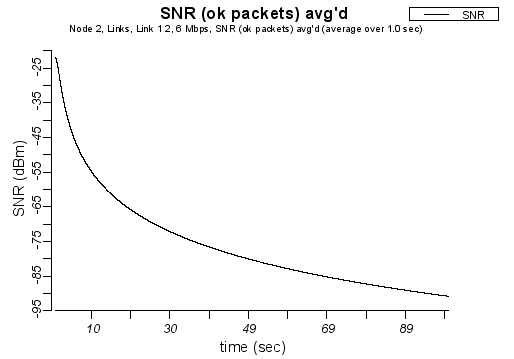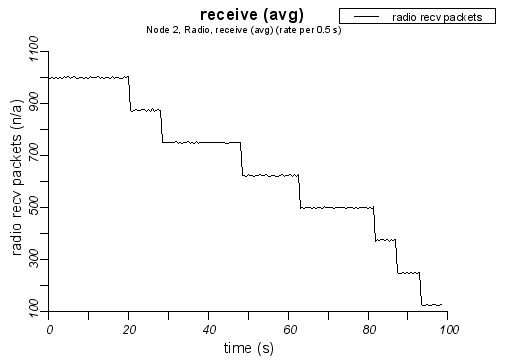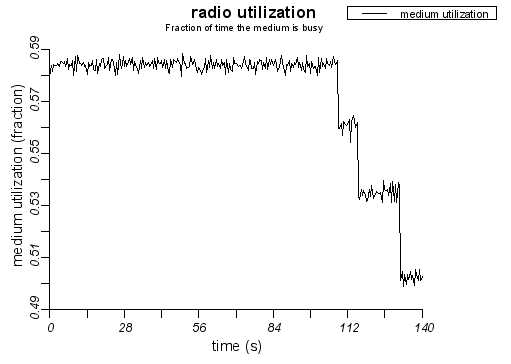Brn.Phy: Difference between revisions
No edit summary |
|||
| Line 15: | Line 15: | ||
== SNR based Receiver == |
== SNR based Receiver == |
||
The SNR model defines two thresholds: a sensing and a receiving threashold. If the SNR of the incoming packet is above the receiving (sensing) threshold, the packet is received (sensed). The thresholds are generally different for different bit rates and they are also hardware dependent. |
|||
[[Image:dist-per-simplepathloss-3.5.png]] |
|||
In this example a node transmits 2000 frames per second, using all available IEEE 802.11g bit rates. A second node is placed near the sender and moves away with 1 m/s. We are again using the log-distance pathloss model with exponent 3.5. While the receiver moves away the SNR of received packets also decrease. Eventually it drops below the threshold for the used bit rate and the frame is not received. Instead the receiver only senses the frame. While moving further away the received SNR eventually drops below the sensing threshold (see next figure). Note that there is only one sensing threshold per receiver, but our IEEE 802.11g transmitter uses different power levels for different bit rates. |
|||
[[Image:dist-sens-simplepathloss-3.5.png]] |
|||
== BER based Receiver == |
== BER based Receiver == |
||
Revision as of 14:25, 30 January 2008
Details about the physical layers in Brn.Sim. Tbd.
Path Loss
Log-Distance based Path Loss
Pathloss using the log-distance based model (see Goldsmith Wireless Communication p. 40) and path loss exponent 3.5 (1sec == 1m).
Shadowing
Fading
Receiver Models
SNR based Receiver
The SNR model defines two thresholds: a sensing and a receiving threashold. If the SNR of the incoming packet is above the receiving (sensing) threshold, the packet is received (sensed). The thresholds are generally different for different bit rates and they are also hardware dependent.
In this example a node transmits 2000 frames per second, using all available IEEE 802.11g bit rates. A second node is placed near the sender and moves away with 1 m/s. We are again using the log-distance pathloss model with exponent 3.5. While the receiver moves away the SNR of received packets also decrease. Eventually it drops below the threshold for the used bit rate and the frame is not received. Instead the receiver only senses the frame. While moving further away the received SNR eventually drops below the sensing threshold (see next figure). Note that there is only one sensing threshold per receiver, but our IEEE 802.11g transmitter uses different power levels for different bit rates.


